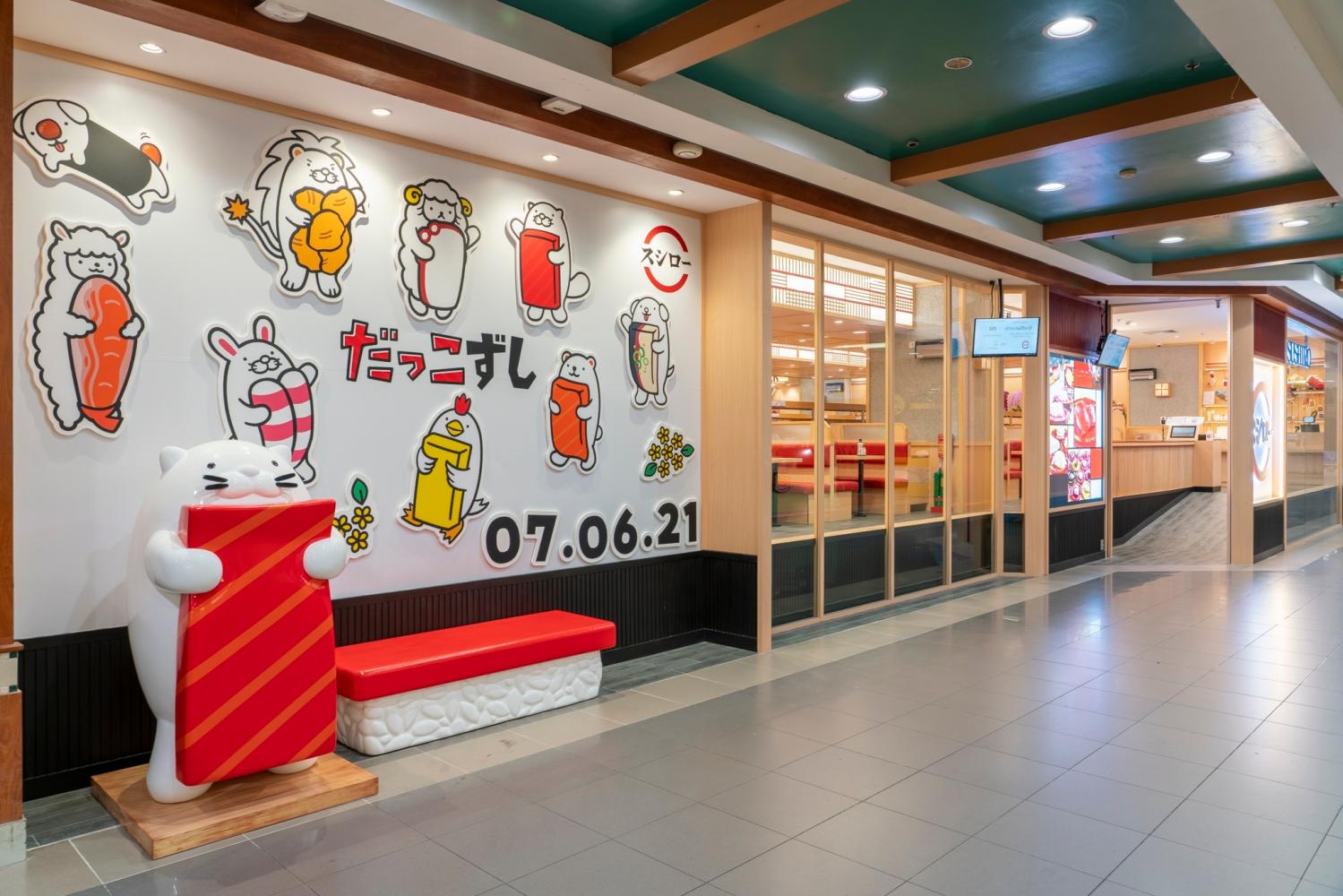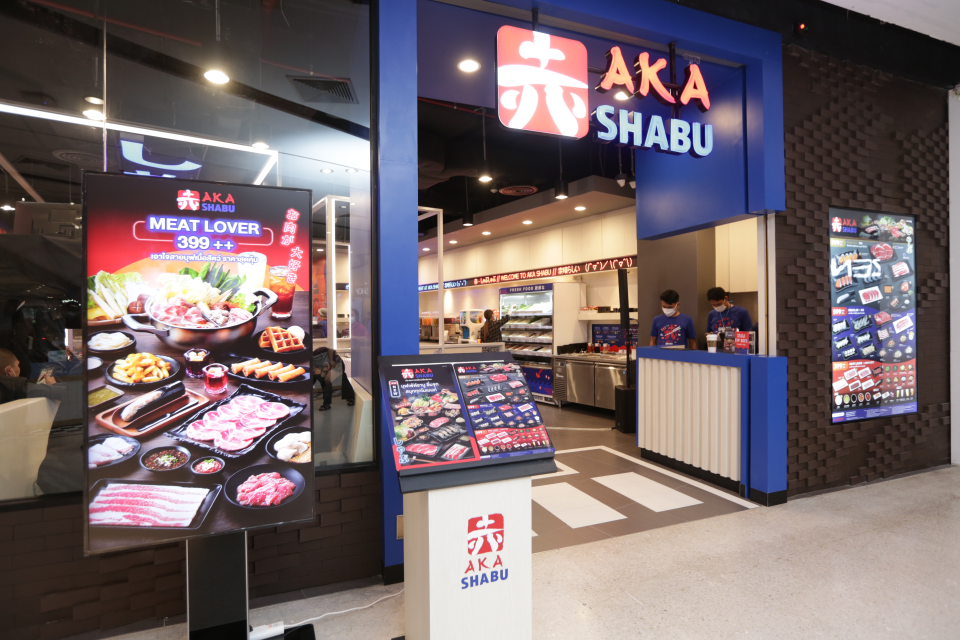
The number of Japanese eateries in Thailand rose by more than 20% last year and they are poised to continue dominating the restaurant market, outpacing foreign peers.
According to the latest market survey by the Japan External Trade Organization (Jetro), the number of Japanese restaurants in Thailand in 2022 increased by 21.9% or 955 from the year before to 5,325, the highest growth in 15 years.
The number of Japanese restaurants in Bangkok's surrounding provinces and other provinces, in particular, posted remarkable growth.

STILL RISING
Jun Kuroda, president and chief representative for Asean at Jetro, said the number of Japanese restaurants in Bangkok in 2022 increased to 2,394 from 2,073 the previous year.
In provincial areas, the number rose to 2,931 restaurants from 2,297 in 2021.
Of the total, 1,431 were sushi restaurants and 1,273 were restaurants that offer a wide variety of dishes. The remainder were ramen, suki/shabu, izakaya, yakiniku/BBQ, cafes, donburi, curry and others.
Ramen and izakaya were the top two categories with the highest percentage growth in 2022, while teppanyaki and okonomiyaki saw the lowest growth for outlets.
The years-long pandemic had a considerable impact. Some 105 Japanese restaurants, both standalone and chain eateries, ceased their operations.
According to Jetro, the Japanese restaurant business has recovered to 70-90% of 2019 levels as some people still prefer to order home delivery and there are fewer sales promotions.
Many consumers order Japanese food via online channels, but at a slower pace than during the height of the pandemic in 2020-21.
Moreover, a hike in the prices of raw materials has negatively affected the Japanese restaurant business, said Jetro.
The majority of Japanese restaurants in Thailand have resumed operations.
A clear sign of the busy expansion of Japanese restaurants this year is visible from major chains such as Zen Corporation Plc, operator of Zen and AKA eateries, while Oishi Group Plc set out its expansion plans in early January.
New Japanese restaurant brands are also expected to enter the market.
As a consequence, many changes are anticipated in this segment in terms of store design, product offerings, ambience and innovation of products and services.
Industry players predict more adoption of technology to cut costs and increase consumer convenience.

ZEN IN EXPANSION MODE
Boonyong Tansakul, chief executive of Zen Corporation, said the expansion of Japanese restaurants is likely to gear towards upcountry areas.
Premium Japanese restaurants are planned to cash in on high spending power as the economy picks up, said Mr Boonyong.
Technology will be adopted, while marketing will shift to online more than in the past, he said.
Zen Corporation expects to open 10-15 AKA restaurants this year.
"We will expand the number of Japanese restaurants in upcountry areas this year. Menus and store formats, pricing and promotions will be adjusted to match local consumers. More importantly, the restaurant format will be designed to be more convenient for younger customers," said Mr Boonyong.
"Given the market competition and changes in consumer behaviour, Japanese restaurants need to alter their offerings."
In 2023, the group plans to implement QR code payment and self-ordering at all its restaurant brands, reducing consumer concerns about contamination from touching.

OISHI GROUP UPBEAT
Nongnuch Buranasetkul, president of Oishi Group, said she believes Japanese restaurants will continue to be popular as Covid infections wane, as Japanese food is widely recognised as being healthy.
This perception fits growing consumer demand for healthy food following the pandemic period, she said.
"Most Thai consumers are familiar with Japanese restaurants. We will expand our restaurant concepts to be more accessible, with various tiers of product prices," said Mrs Nongnuch.
Oishi plans to resume hefty investment this year, with 30 new Japanese restaurant models and categories projected, up from an average of 15-20 new stores per year previously.
More Oishi Biztoro branches will be rolled out to serve customers who prefer value for money and convenience, she said.
The company opened the first branch of Oishi Biztoro at Central Ayutthaya last year and now operates eight such outlets.

It plans to open 10-15 Oishi Biztoro branches mainly via franchisees in Bangkok this year, while aiming to open 30 new restaurants in various formats per year over the next three years, said Mrs Nongnuch.
Oishi improved its product quality by selecting choice ingredients from leading producers around the world, including from Toyosu Market, the largest fish and seafood market in Japan, she said.
According to Mrs Nongnuch, more hybrid format branches combining buffet and individual orders will be introduced this year, shifting from 100% self-service buffet outlets previously.
"Japanese restaurants will continue to dominate the market because Japanese products are aspirational for Thais. They are in line with the health and wellness trend," she said.
"Japanese restaurants also offer a wide variety of choices, encouraging more regular visits. The mass premium category is growing and more small format restaurants will be opened."
CRG READY TO EXPAND
Nath Vongphanich, president of Central Restaurants Group Co (CRG), said its Japanese restaurant portfolio has resumed steady growth since the fourth quarter of last year.
The company opened 22 Japanese restaurants across all formats in 2022, boosting its revenue by 46% to 2.1 billion baht, nearly on par with the revenue it registered before the Covid crisis.
CRG operates 218 Japanese restaurants across seven brands, comprising Pepper Lunch, Chabuton Ramen, Yoshinoya, Ootoya, Tenya, Katsuya and Ramen Kagetsu Arashi, Japan's most popular noodle restaurant.
The Japanese cuisine business contributes 20% of CRG's revenue.
"As Covid infections have diminished, the restaurant business has started to recover. Japanese restaurants, in particular, are poised to grow at full speed," said Mr Nath.
The company vows to continue adding new Japanese categories to its portfolio this year via joint ventures and franchises. Yakiniku and shabu are two categories in the pipeline.
CRG also plans to open 15 Japanese restaurants via 2-3 brands this year, excluding its new Japanese brands for this year, he said. The company allocated investment of 130 million baht for Japanese eatery expansion this year.
"Competition among Japanese restaurants is very high because new players continue to debut, with few barriers to entry. New players have done well in differentiating themselves from peers, using unique gimmicks," said Mr Nath.

GREAT OPPORTUNITY
Pimploi Laisin, marketing manager of Sushiro GH (Thailand) Co, operator of Sushiro conveyor belt sushi from Japan, said the company posted continuous growth after entering the market in 2021 during the pandemic.
The company operates 13 Sushiro restaurants in Bangkok.
"We chose Thailand to expand the business because Thai customers are attracted to Japanese culture and consume Japanese food more often than other kinds of cuisine. We decided to debut our business during the pandemic because we see a great opportunity here," said Ms Pimploi.
Sushiro GH plans to open 5-6 Sushiro restaurants per year over the next few years and start to explore market opportunities in upcountry areas over the next 2-3 years, she said.






